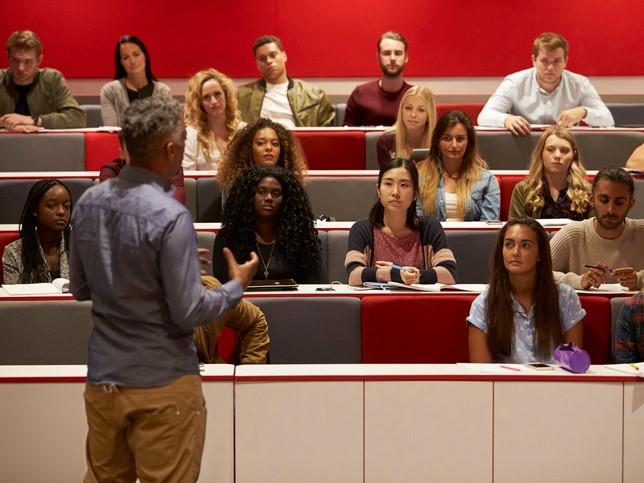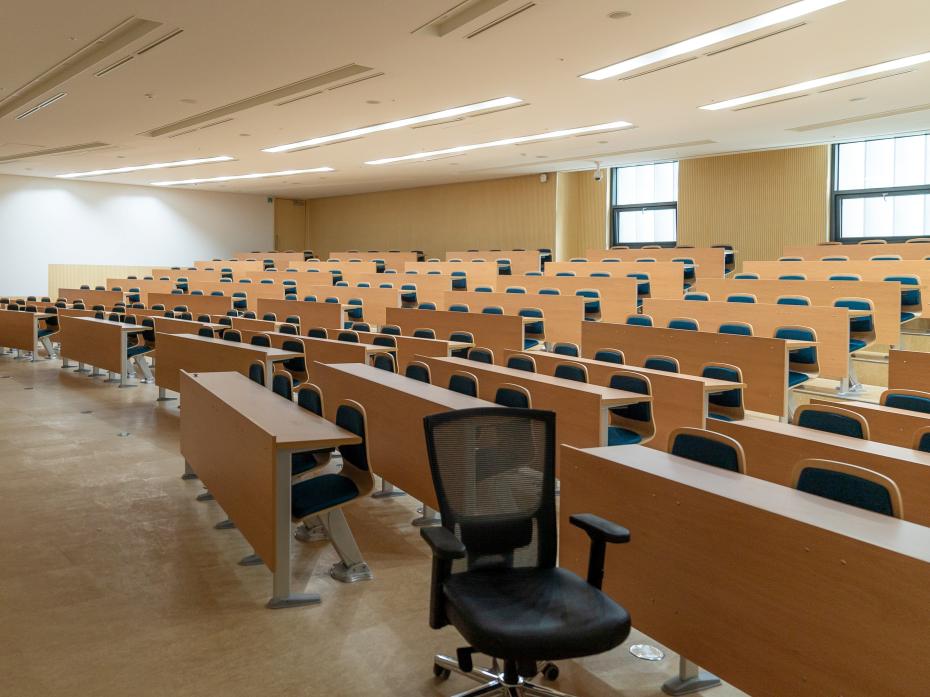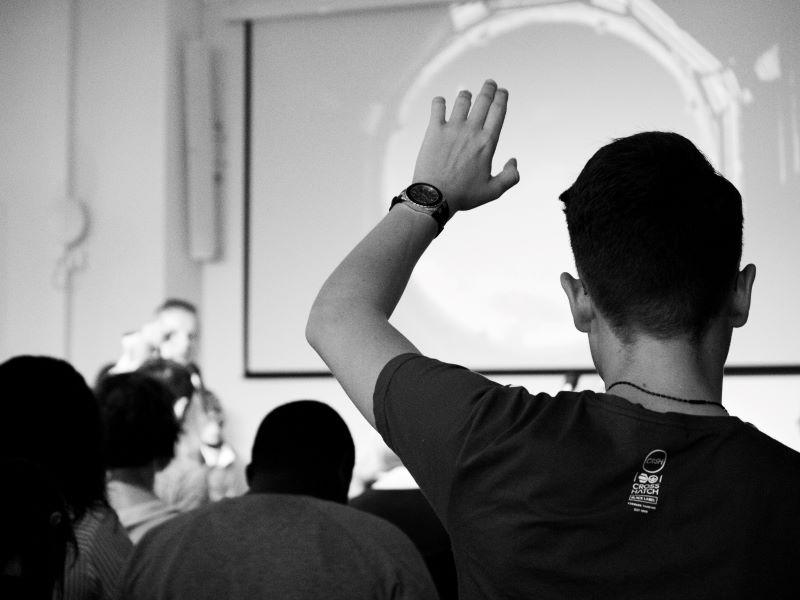As a lecturer who has actively explored the role of lecture recording as a form of technology-enhanced learning, there’s a question I keep returning to: what is a lecture for?
In the glorious utopian landscape of pre-Covid higher education, we knew that lecturers and students conceptualised recordings differently. In the physical lecture hall, lecturers thought about their performance and stagecraft. Even those lecturers who didn’t like the idea of a “show” were aware of the anxieties of standing in front of a crowd.
Early career staff worried about being asked a question they might not know the answer to, while experienced staff might be distracted wondering about their next grant proposal. For lecturers, there is far more happening in the lecture than “just” the flow of information.
- Resource collection: back to the basics of pedagogy
- The lecture is dead, long live the lecture – redefining higher education in a digital age
- The active lecture: student-centred learning for the future
For students, the lecture was more functional. It was the route to their next assignment, to the future they were planning.
This mismatch in lecturer and student perception only deepened when the question of recordings was introduced into the fray. Lecturers worried about recordings canonising the material, preventing students questioning the lecturer and creating a definitive version that could not be questioned. Not only would students be able to regurgitate the lecture word for word in the exam, but any mistake or faux pas could be committed to digital eternity. Students, on the other hand, were worried about what might happen if they or a relative they were caring for got sick. How would they get access to that valuable learning without recordings?
Now we are no longer in the golden pre-Covid days, I find myself reflecting on the relevance of this research moving forward.
Desire to learn
Many of the fears about the use of lecture recordings have proven unfounded. With the majority of HE providers delivering some form of recorded or hybrid teaching in the past academic year, we’ve not seen an influx of students snipping parts of their lecture for YouTube. It seems that even in the entertainment-starved year of 2020, lecturers are not so buffoonish that they are worth watching if you’re not studying the subject.
Furthermore, we’ve seen that when students are given the ability to be flexible with their studies, they do continue to study and continue to want to come to university. Despite the doomsayers, neither Covid-19 nor lecture recordings have succeeded in reducing student numbers or upending the HE model.
Perhaps − and this may be a contentious statement − students want to learn from experts in their field?
Widening access
We know that HE has a widening access problem. During the pandemic, I was leading QAA Scotland’s Widening Participation with Lecture Recording Collaborative Cluster. Discussions with colleagues across the sector in the early days of the pandemic were eye-opening. There were reports of students with disabilities commenting that “all the accessibility options I was asking for were possible this whole time”. This is not a good reflection on our sector.
Part of the learning from Covid must be how we can maintain the accessibility that hybrid teaching has offered while acknowledging the importance of on-campus teaching for both provision of resources (how many laptops did your university have to provide in 2020?) and student support (what was your university’s special circumstances for assessment policy in 2020?).
In some of our pre-Covid research, funded by an Echo360 academic research programme, we took a deep dive into how students use recorded lectures, which has implications for all students.
While this was a self-selecting sample of, presumably, highly motivated students, we saw very encouraging behaviours. Students used a variety of study techniques but commonly made recordings the “skeleton” they branched off from, building knowledge and filling out their notes.
We know students return to recordings more in the run-up to exams, but is this really a problem? Shouldn’t students study more in exam season, while spending the rest of their university time building those important social skills that will take them into the rest of their lives?
Assessing progress
I wonder about open-book assessments this year, too, and how many students retreated to the regurgitation of lecture notes we feared in pre-Covid times. In the emergency pivot to hybrid learning this may be forgivable.
A good open-book exam cannot be achieved by simply repeating notes back; we want to see application of knowledge and demonstration of skill. But designing these is hard. We need to induct students and staff into a new way of teaching and learning, one where we can retrieve information easily but where evaluating that information is more important than ever.
Shared experience
One positive change we made at Edinburgh was a workshop exploring how to bring staff and students together and agree on what happens in various lecture scenarios. This workshop, hosted on QAA Scotland’s Focus On: Lecture Recording Technology Hub is how I would model the approach to the future of HE as we emerge, blinking, from our remote-working offices.
So, what is the lecture for? I’d argue it’s a space for staff and students to gather. It’s where students get to see how to ask a question, how confused their peers are by a new concept and a space where they can start to become the zoologist, anthropologist or artist they came to university to be. Lecture recordings simply reflect back to us a little of what happens in that time. We must work with students to make sure that space suits us all.
Jill MacKay is a lecturer in veterinary science education at the University of Edinburgh.
If you would like advice and insight from academics and university staff delivered direct to your inbox each week, sign up for the Campus newsletter.




comment